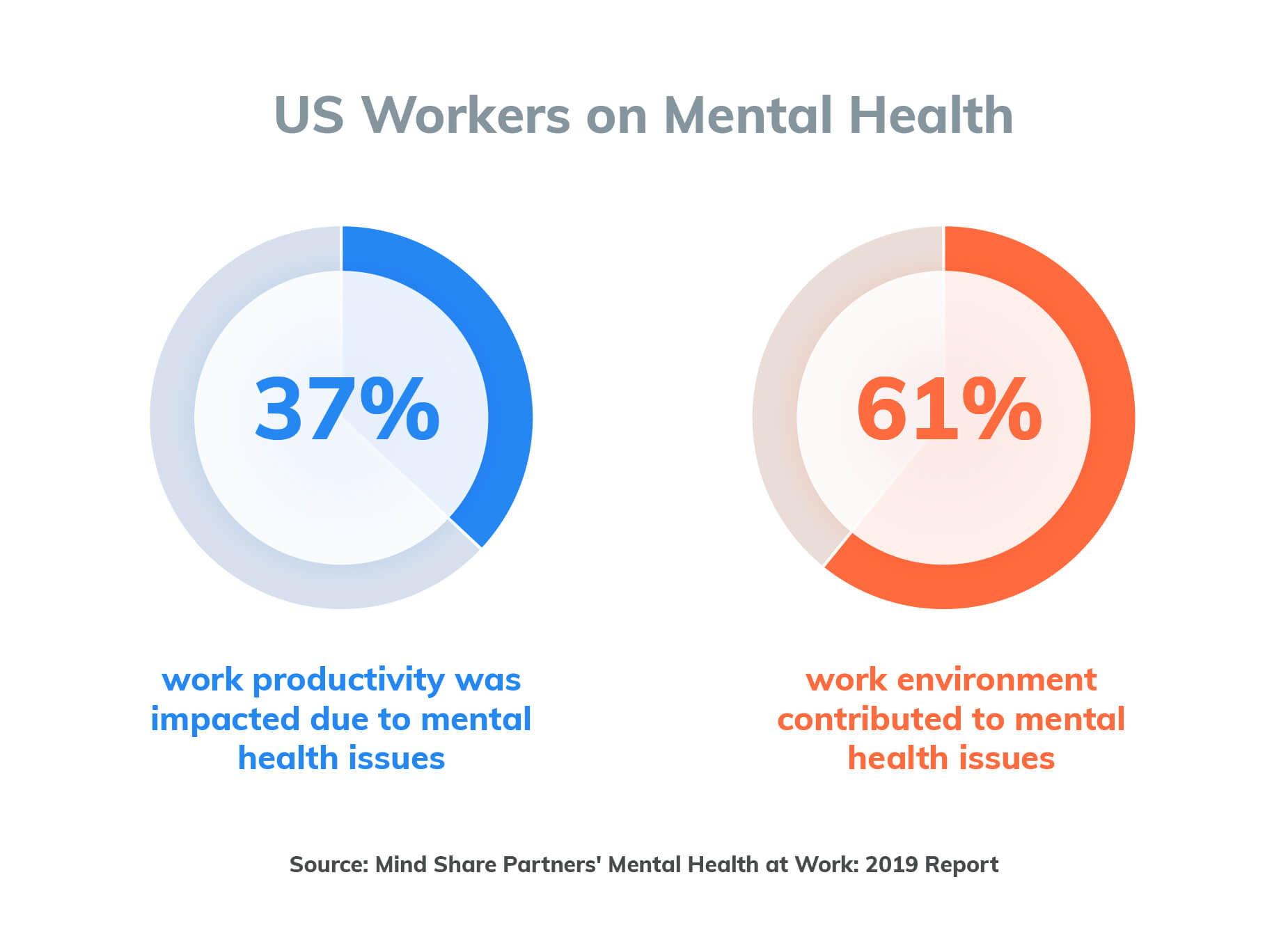The current workplace environment looks caught between a rock and a hard place. With 77 percent of full-time US employees working from home, we still have record-high levels of remote workers. Yet, in-spite of distributed locations, leaders want their teams to be highly productive. And all of this on top of a sanitary crisis. So, are you ready to dive headfirst into the mental health paradigm at work? Let’s do it!

In this article of my monthly series, I’m going out of the productivity box again, this time to explore how mental health influences work performance. And sailing even further, I’m looking for solutions to break the paradigm.
Breaking the vicious circle
External factors related to the global COVID-19 pandemic weigh heavily (and differently) on everyone. The more productive we try to be, or the harder we try to work to match pre-coronavirus performance, the more stressed out we become. Stress and anxiety then negatively impacts our health, both mental and physical, which hurts our overall effectiveness.
Grow your business faster with better team communication!
Remote leaders and managers need to offer tangible solutions and resources for their team not only to survive but also to thrive during this unprecedented time.
What is mental health?
Mental health encompasses our emotional, psychological, and overall well-being. It impacts every facet of our life from how we think, feel, and act towards others. Contrary to previously held beliefs, these kind of issues aren’t all in your head.
What’s more, our mental wellness isn’t only psychological but can also directly manifest with physical symptoms. Recent research and studies confirm this:
- Research shows that chronic stress and anxiety can impact the immune system and lead to cardiovascular disease and depression.
- A 2014 Oxford study concluded that mental illnesses could reduce life expectancy by 10 to 20 years.
- According to Harvard Health, 65 percent of the patients that seek help for depression also experience some type of physical pain.
- Another comprehensive study explains that those with generalized anxiety disorder (GAD) have a different composition of white vs. gray matter in their brains. The brain of someone with GAD is fundamentally different from someone without.
Understand the current crisis
The boundaries between work and life have blurred for many years, impacting the health of stressed-out workers. Mind Share Partner’s Mental Health at Work: 2019 Report found that 60 percent of workers experienced a mental health condition in the past year.
Not to mention, the relationship between work and mental health formed a vicious circle, with 61 percent reporting that their work productivity was impacted due to mental health. However, 37 percent said their work environment contributed to their mental health issues.

COVID-19 has created even more imbalance. A Qualtrics study of more than 2,000 global workers found that 41 percent have experienced a decline in mental health since the pandemic outbreak. Many factors caused this mental health slump, including newly remote office settings, unemployment or furloughs, and job security threats.
Finally, another recent survey by Ginger found staggering results of COVID’s impact:
- 91 percent of WFH employees experience moderate to extreme stress
- 43 percent became physically ill as a result of workplace stress
- 69 percent of workers claim this is the most stressful time in their career, even more so than the September 11th attacks and the 2008 recession.
Stop mental health from impacting productivity
The monumental impact on mental health due to the Coronavirus and the shift to a work-from-home environment points to one fact: leaders must focus on their employees’ mental wellness.
Support your team with mental health challenges and acknowledge the difficult time they’re facing. Refer to the following tips (with accompanying resources) to better support your team:
- Encourage physical fitness. Exercise can help with stress and anxiety as well as getting into the flow at work.
- Avoid burnout by following work-from-home resolutions that promote better work-life balance.
- Practice better communication. Ask your team how they’re doing, offer help even without being prompted, and regularly check in.
- Ensure that your organizational culture adapts and stays strong throughout the continuous evolutions that come from COVID-19.
When employees are less stressed, their performance will also improve. The previously mentioned Ginger study found that 70 percent of workers agreed that employees at their company are significantly less productive because of the stress and anxiety surrounding COVID-19.
Work within the paradigm
We face a catch-22 where employees are so stressed out they can’t perform effectively at work, but work and performance anxiety add to that overall stress.
Leaders must continue to put mental wellness at the forefront of their management strategy. If you want your team to thrive at work and home, you have to remember that your leadership can directly influence their overall mental health. Not to mention that happier employees and less stress lead to increased productivity.
Comments are closed